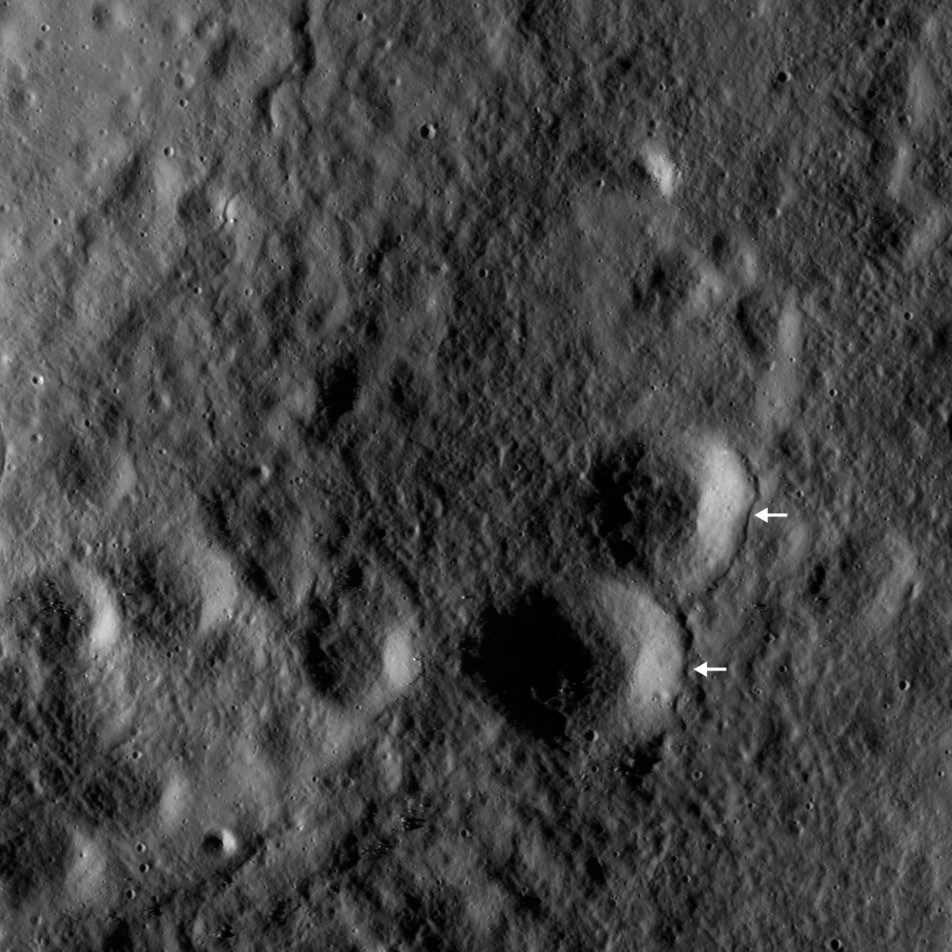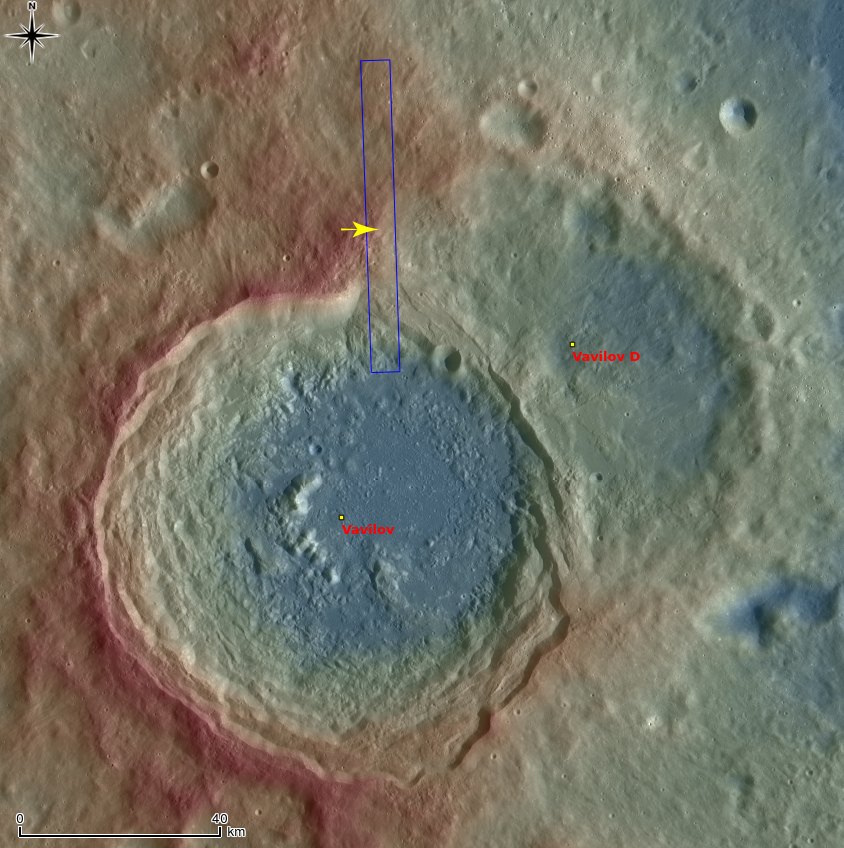
Vavilov D is an heavily degraded crater (~96 km in diameter) located between the Orientale basin and Jackson crater. The later formation of Vavilov crater (~99 km in diameter) destroyed the southwestern half of the Vavilov D. Today's opening image highlights the northwestern portion of the Vavilov D wall (see next context image). The relatively smooth textured area in the upper left corresponds to the outside of Vavilov D, and the rest of rough/craggy surface is the interior crater wall slope.

The two degraded craters (~280 m in diameter) near the middle of the opening image exhibit fascinating overlying smooth features that may have formed as material flowed downslope (arrows). Other morphologic pits/dents on this slope also have similar textures. What we are seeing here are most likely remanants of impact melt that was thrown out of the Vavilov crater. Craggy sloped surfaces with patches of smooth material are often found associated with young impact craters -- formed as impact melt flowed over and around the newly formed crater.
Related Posts
Published by Hiroyuki Sato on 12 June 2014